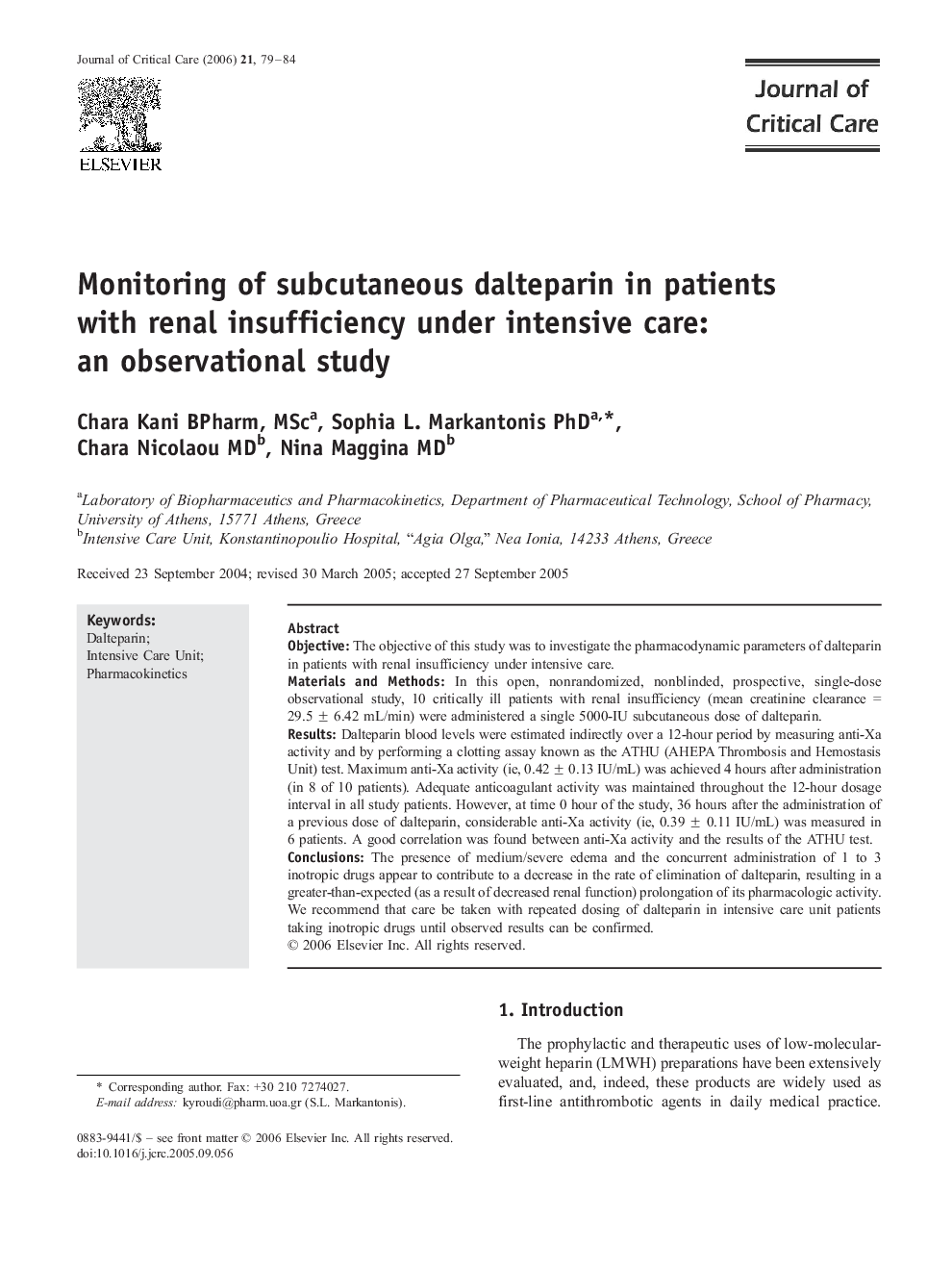| Article ID | Journal | Published Year | Pages | File Type |
|---|---|---|---|---|
| 2765436 | Journal of Critical Care | 2006 | 6 Pages |
ObjectiveThe objective of this study was to investigate the pharmacodynamic parameters of dalteparin in patients with renal insufficiency under intensive care.Materials and MethodsIn this open, nonrandomized, nonblinded, prospective, single-dose observational study, 10 critically ill patients with renal insufficiency (mean creatinine clearance = 29.5 ± 6.42 mL/min) were administered a single 5000-IU subcutaneous dose of dalteparin.ResultsDalteparin blood levels were estimated indirectly over a 12-hour period by measuring anti-Xa activity and by performing a clotting assay known as the ATHU (AHEPA Thrombosis and Hemostasis Unit) test. Maximum anti-Xa activity (ie, 0.42 ± 0.13 IU/mL) was achieved 4 hours after administration (in 8 of 10 patients). Adequate anticoagulant activity was maintained throughout the 12-hour dosage interval in all study patients. However, at time 0 hour of the study, 36 hours after the administration of a previous dose of dalteparin, considerable anti-Xa activity (ie, 0.39 ± 0.11 IU/mL) was measured in 6 patients. A good correlation was found between anti-Xa activity and the results of the ATHU test.ConclusionsThe presence of medium/severe edema and the concurrent administration of 1 to 3 inotropic drugs appear to contribute to a decrease in the rate of elimination of dalteparin, resulting in a greater-than-expected (as a result of decreased renal function) prolongation of its pharmacologic activity. We recommend that care be taken with repeated dosing of dalteparin in intensive care unit patients taking inotropic drugs until observed results can be confirmed.
